
[360] Viscum album, Mistletoe
Introduction
Viscum album, Mistletoe, is a familiar obligate hemi-parasitic plant with poisonous white berries, known for its traditional use at Christmas. As this comes out on Boxing Day you may see some as you read this.
The word Mistletoe originally applied to Viscum album, which is widespread in Europe. It has been extended to other species of the genus Viscum, then to the wider family Viscaceae (now part of Santalaceae,) and to several other families that have developed hemi-parasitic forms by parallel evolution.
So, in some circumstances, Viscum album has the more formal name European Mistletoe or Common Mistletoe.
Taxonomy
Kingdom – Plants
Division – Vascular Plants
Class – Angiosperms (Flowering Plants)
Order – Santalales
Family – Santalaceae or Viscaceae
Genus – Viscum
Scientific Name – Viscum album
The Mistletoe family, Viscaceae, was a small group of seven genera. Some botanists moved it to within Santalaceae recently but the move is disputed by others.
Name
The Old English mistel for mistletoe became mistle-tan with the addition of tan meaning twig. This became mistletoe by folk etymology.
The Classical Latin viscum, of unknown etymology, meant either mistletoe or birdlime (a sticky substance made from mistletoe to catch birds.) We have already met alba (feminine) or album (neuter) for white.
Parasitic Plants
Many plant species have evolved to grow on or around other plants, generally trees, and these can be categorized into three types.
- Epiphytes. These grow on the surface of the host plant but do not adversely affect it. They get physical support from the host but air, rain and other surrounding debris provide all the nutrients it requires. This category includes many mosses, liverworts, lichens, ferns, cacti, orchids and bromeliads.
- Holo-parasites are completely parasitical and derive all of their nutrients from the host. They are not generally green as they do not need chlorophyll.
- Hemi-parasites lie in between these two types. They extract some water and nutrients from the host plant but also maintain some photosynthesis to produce nutrients with the help of sunlight.
Some hemi-parasites are Obligate Parasites. This means that they cannot complete their normal life-cycle without the host plant. (Holo-parasites are always obligate.)
Mistletoe
All Mistletoe species are obligate hemi-parasites. They are a good example of Parallel Evolution, where unrelated organisms change to look and behave similarly in order to adapt to a particular environment. About a dozen different plant groups are now mistletoes. Only three of these are separate families in the order Santales.
I will continue to consider our familiar species Viscum Album.
When seen in trees from ground level, it looks like a spherical ball about a metre in diameter. They are obviously much more apparent in winter when you may see dozens of them in each tree. Even when the tree is almost covered it survives well and grows in the spring leaving the mistletoe less visible.
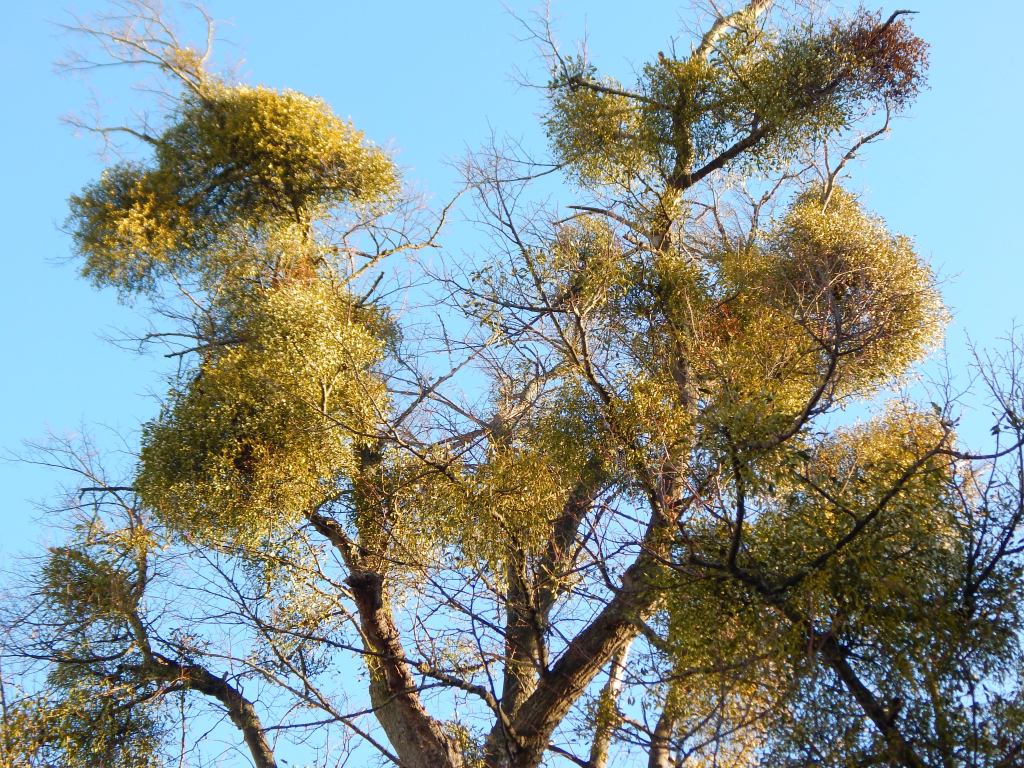

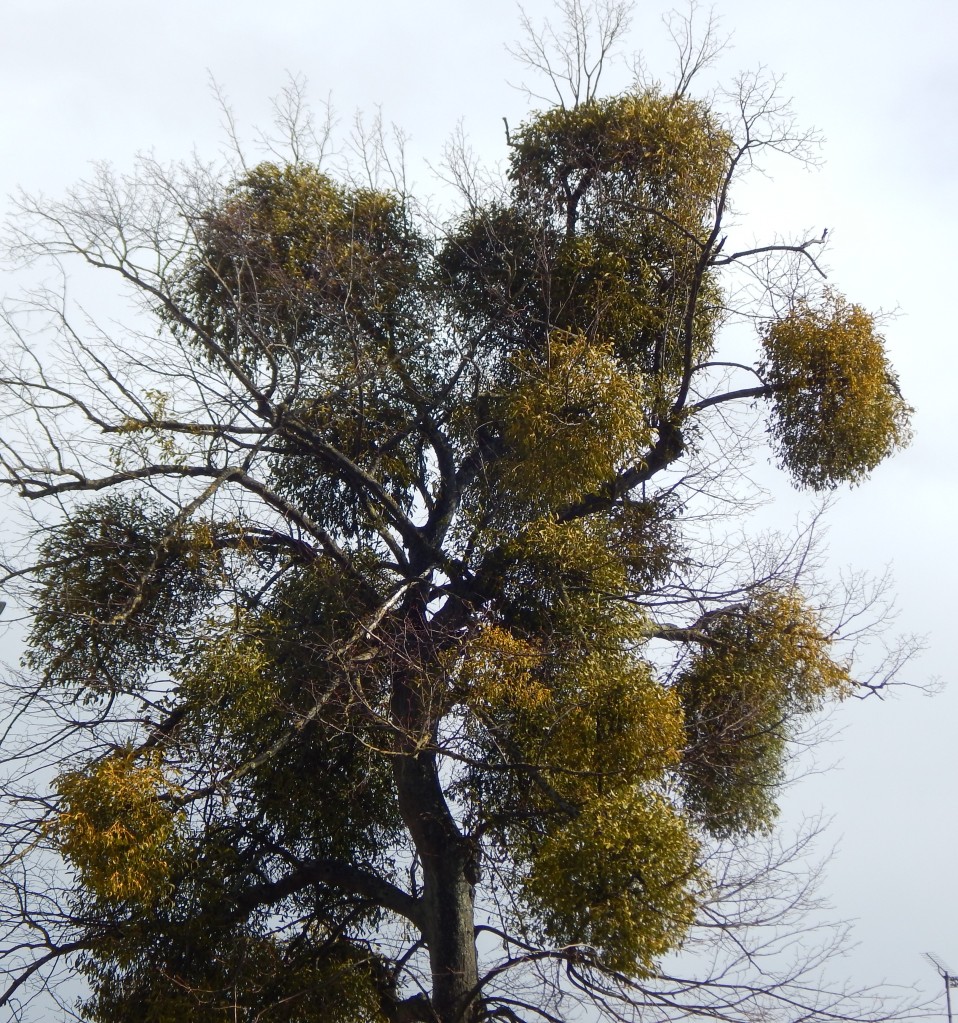

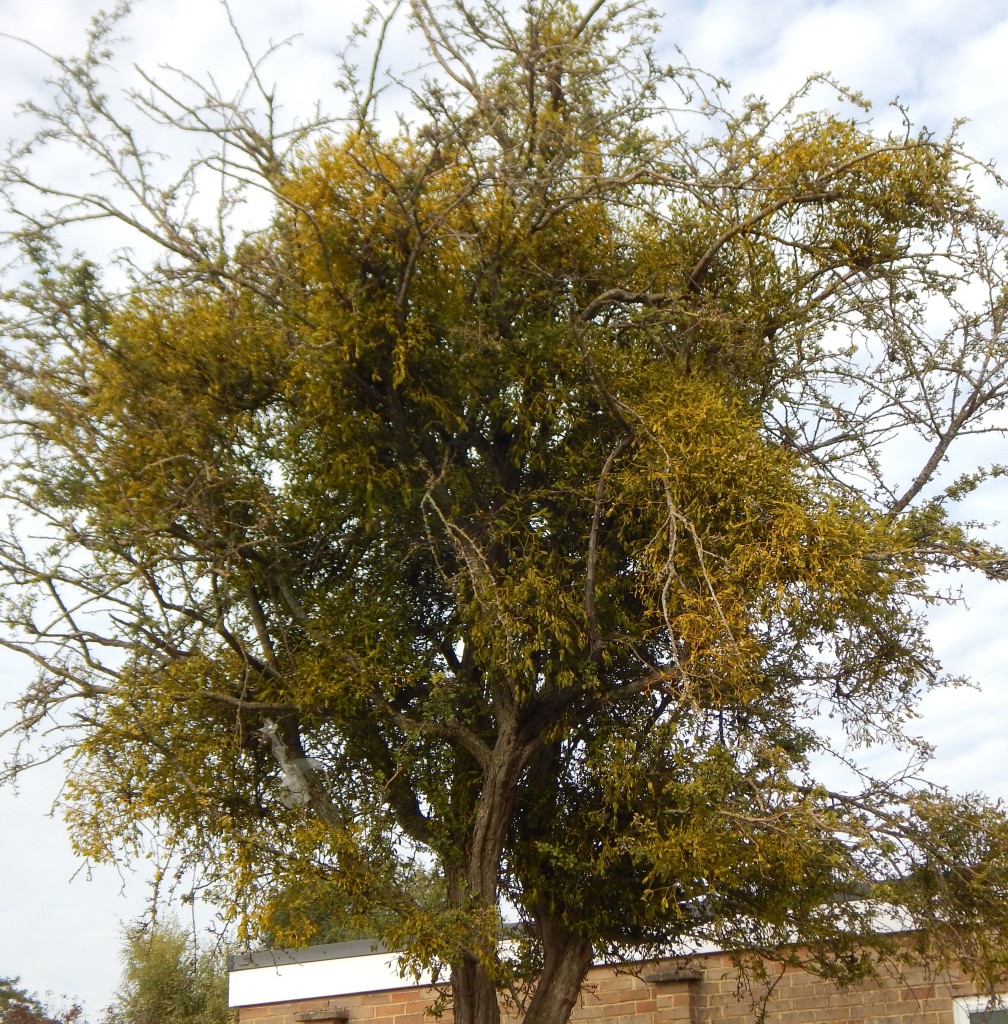
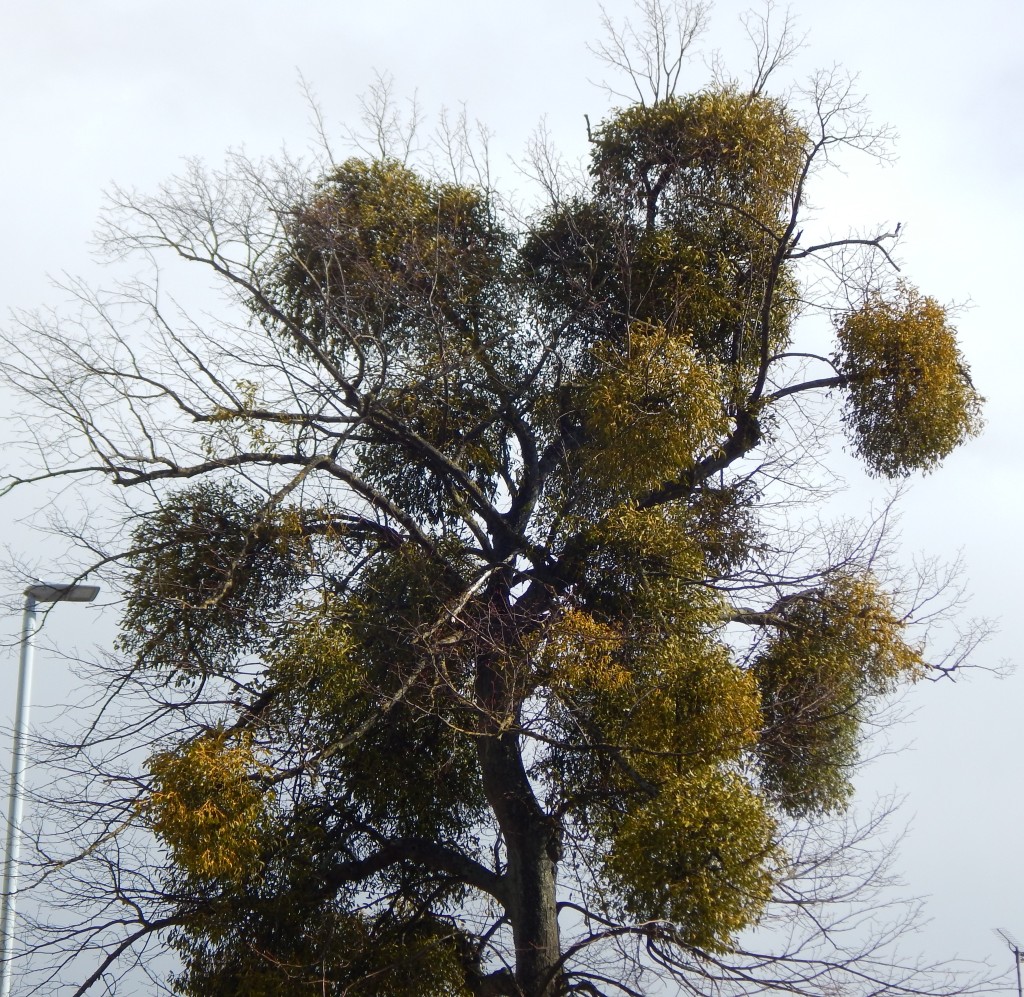
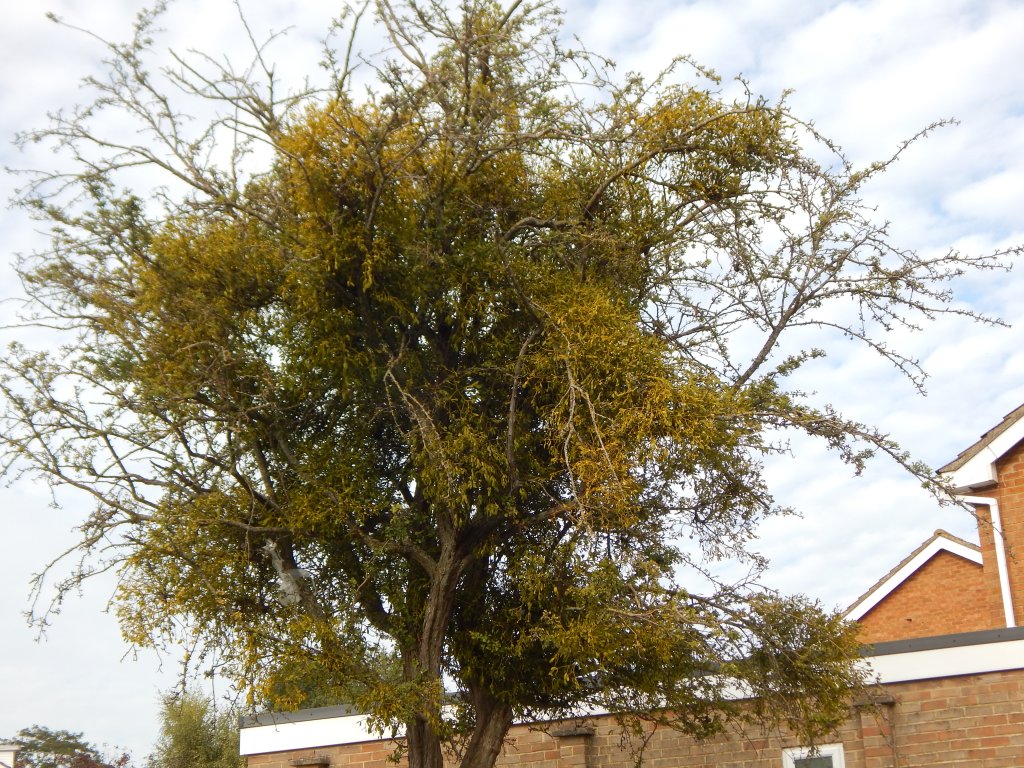
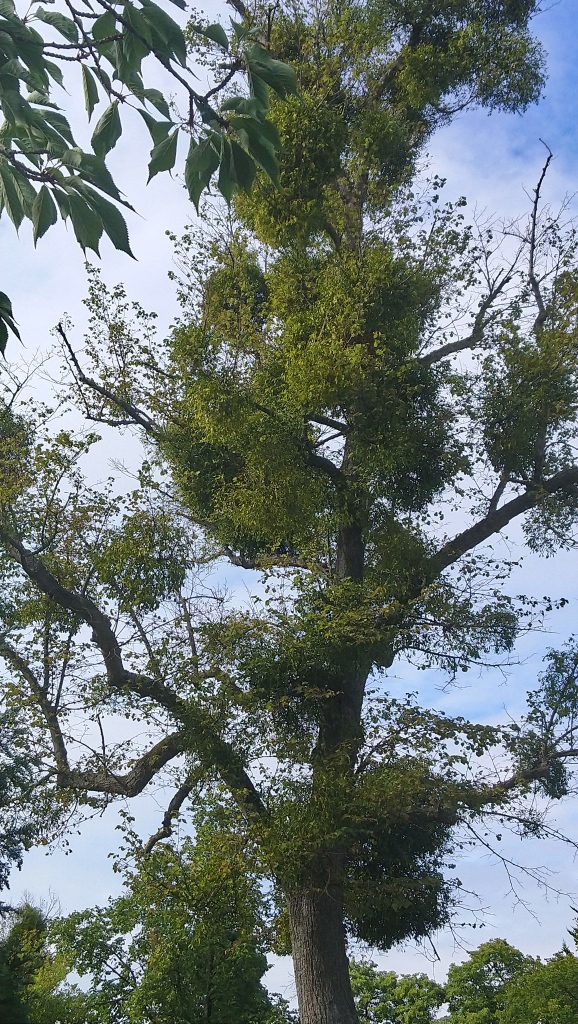
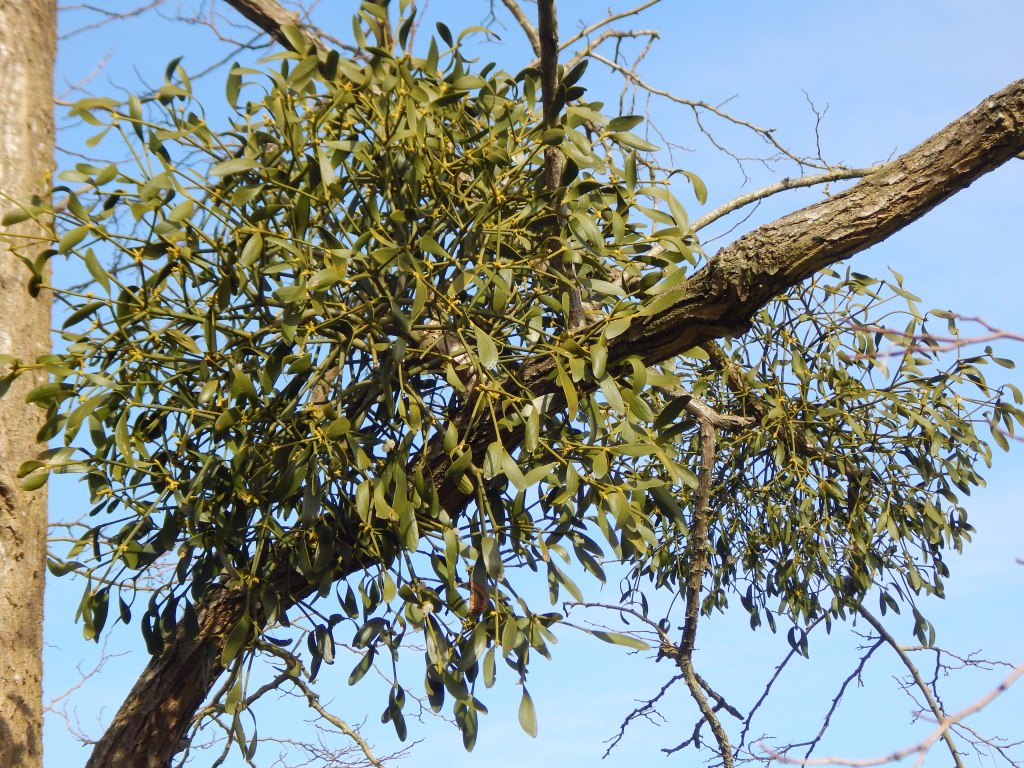
Fifty tears ago I would have said that Mistletoe was familiar from its use at Christmas but it has become much rarer since then. It is evergreen with branching tubular stems and pairs of elongated leathery oval leaves.


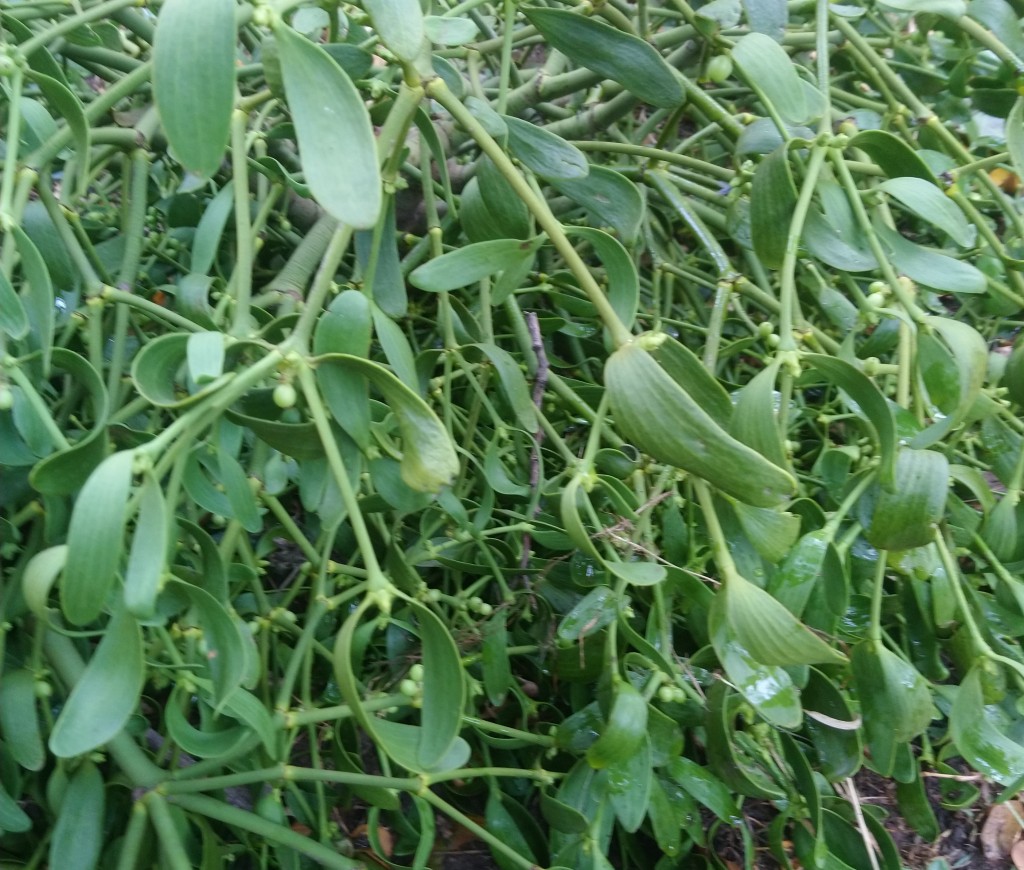
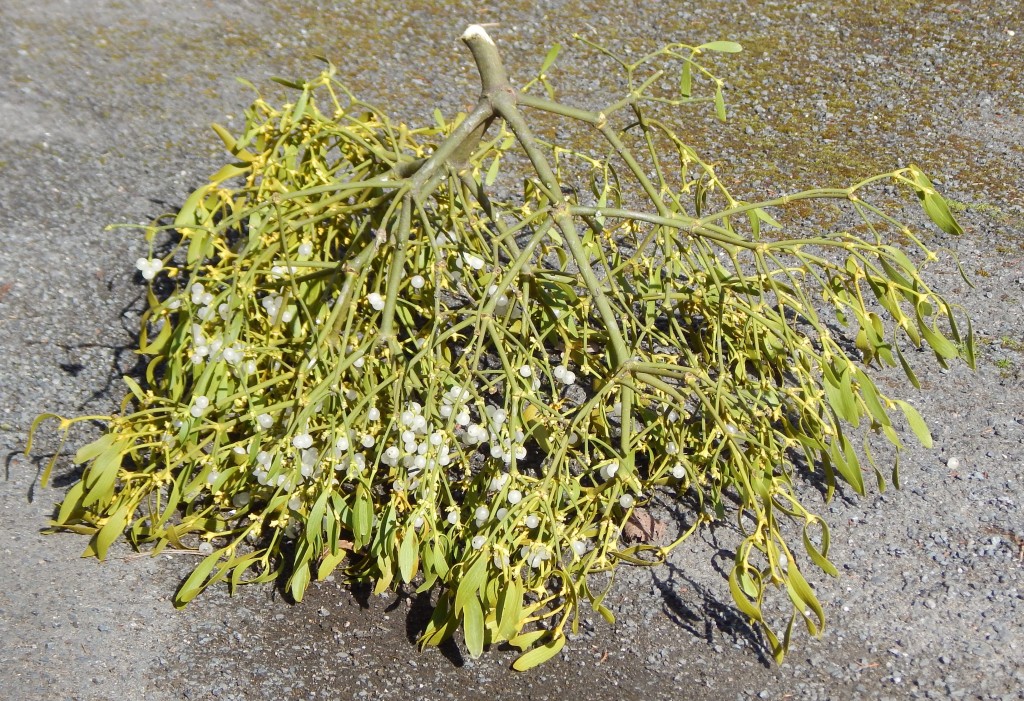
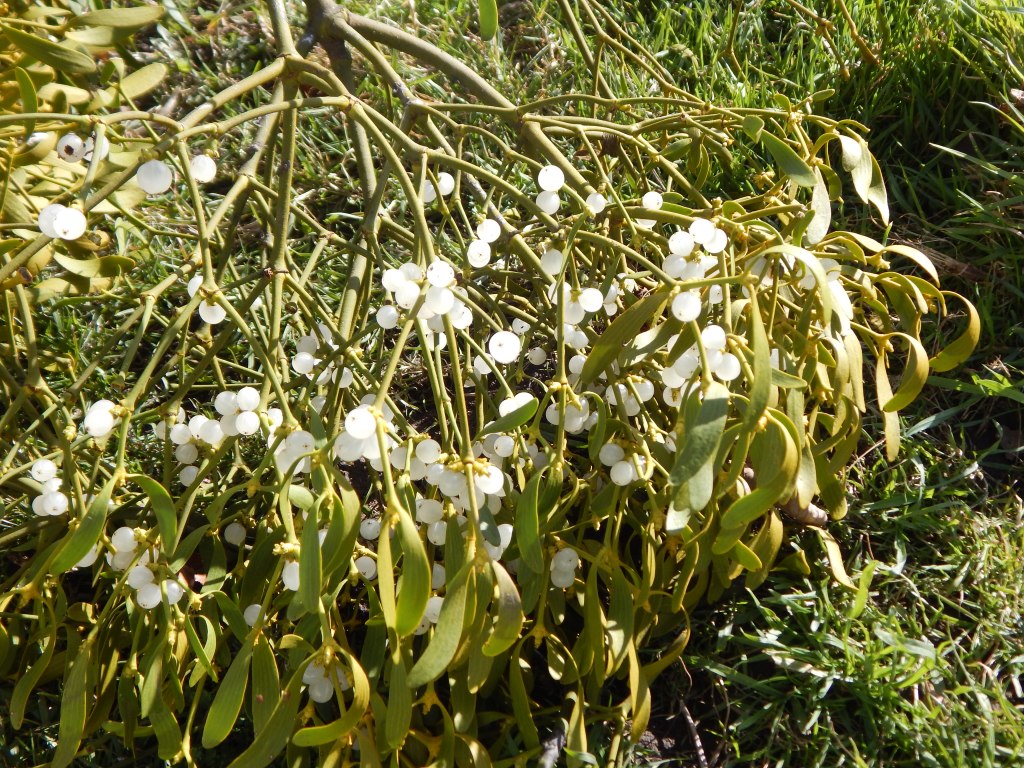

Flowers are inconspicuous but the fruit forms conspicuous white berries that remain on the plant. Other species of Viscum may produce coloured berries.



It is a poisonous plant and it is very dangerous to eat the berries. Many species have adapted to be able to eat them.
Habitat and use
Viscum album is the only type of Mistletoe seen in the UK and most of Europe. Its natural range extends partly into Asia and it is found in the USA (where they have other native plants called mistletoe,) as an introduced species.
It is found within broad-leaved trees. Wikipedia says that it likes Apple, Lime, Hawthorn and Poplar but it is very common in the streets of Cheltenham where I have never seen any of these four species.
It has been associated with folklore and mythology for thousands of years and was absorbed into Christian traditions long ago. It is hung as a Christmas decoration and since about 1800 there has been a tradition of kissing under the mistletoe. Sometimes a berry was removed for each kiss – and when no berries remained, the kissing stopped. (This European tradition has spread to the USA, where they use their species of Mistletoe.)
Over the last twenty or thirty years this tradition has declined, largely because mistletoe is no longer widely available at Christmas. It has supposedly become rare over much of Europe but remains very common in an area centred at the town of Cheltenham. We have several main streets lined with trees where every tree supports large colonies of mistletoe. I didn’t have to go far for my pictures.
Other Notes
I am writing this at the same time as my post that includes [348] the Mistle Thrush. Turdus viscivorus gets both its common name and its scientific epithet from its liking of the Mistletoe berries. They are glutinous and the stones remain sticky even after passing through the birds, who then deposit them in other trees.
See also
There is, of course, nothing in the UK even closely like Mistletoe but as Christmas decorations I have to mention [184] the Holly and [170] the Ivy, immortalized in a popular Christmas carol.
